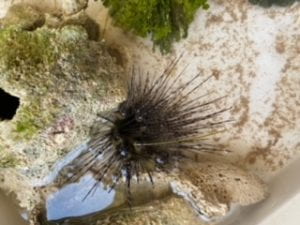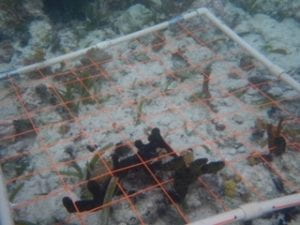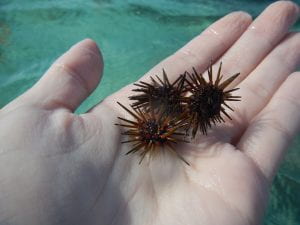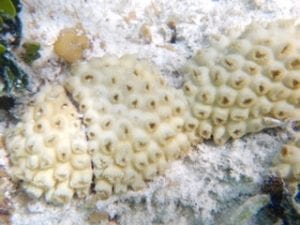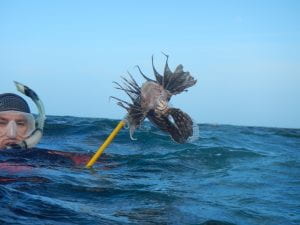We started today with an experiment! We spent time forming a question, hypothesis, and methodology regarding percent coral coverage (live v. dead) and sea urchin abundance in MPA and non-MPA patch reefs. In the time we had before lunch and before we went out onto the boats, we did a taxa collecting activity, where we waded in shallow water and collected tons of organisms and specimens.
Once back in the wet lab, we organized them all into tubs and presented our “expert” taxon group. One cool find of note was a Diadema annularis sea urchin (DO NOT TOUCH).
After lunch, we headed out on a boat (!!) to perform our experiment (at least getting it started). We went to West Reef (non-MPA) with our transects and quadrats. After collecting data on corals, we had a timed urchin-collection period. I found three!
We went to a second patch reef (MPA) to explore just for fun for the sake of curiosity. Such an amazing experience! I spotted a cyan-colored (WOW!!) corallimorph and a white encrusting zoanthid (oooooo)! I finally added some variation in my spotting of my taxa.
The highlight of the day was Dr. Solomon SPEARING a lionfish and capturing it! (This is a good thing because lionfish are an invasive species in the Caribbean)
This was probably the coolest thing I’ve ever witnessed, and I know that my reef buddy Liliana (who has a passion for one day eating a lionfish) was beyond thrilled!
This experiment will be continued over at least the next day to collect more data on different patch reefs, and then I will have another picture of a poster to attach in my blog.
Here comes another night of much-needed sleep, with a slightly higher chance of having lionfish for breakfast tomorrow 🙂
– McKenna


